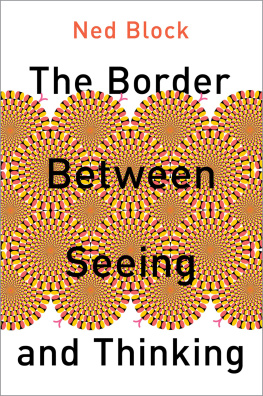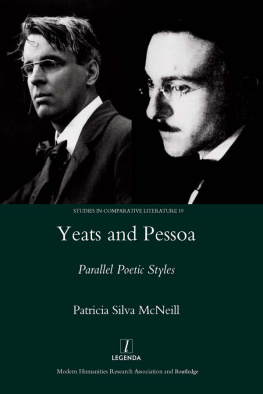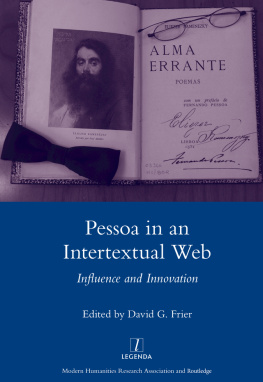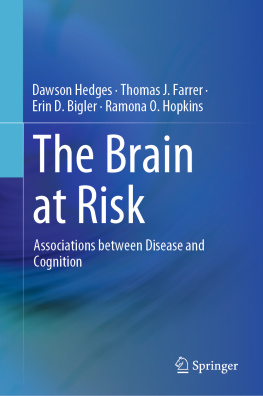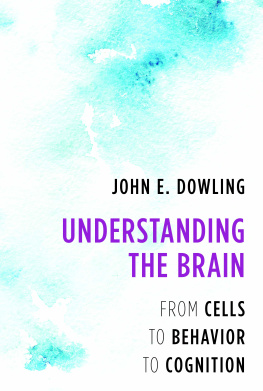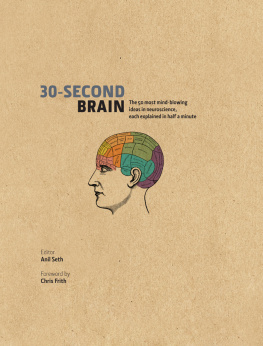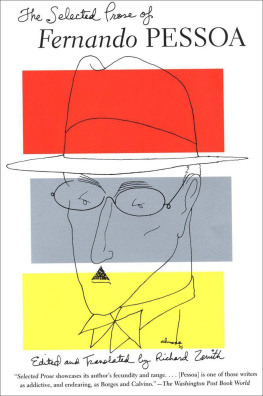Luiz Pessoa - The Entangled Brain: How Perception, Cognition, and Emotion Are Woven Together
Here you can read online Luiz Pessoa - The Entangled Brain: How Perception, Cognition, and Emotion Are Woven Together full text of the book (entire story) in english for free. Download pdf and epub, get meaning, cover and reviews about this ebook. year: 2022, publisher: The MIT Press, genre: Computer. Description of the work, (preface) as well as reviews are available. Best literature library LitArk.com created for fans of good reading and offers a wide selection of genres:
Romance novel
Science fiction
Adventure
Detective
Science
History
Home and family
Prose
Art
Politics
Computer
Non-fiction
Religion
Business
Children
Humor
Choose a favorite category and find really read worthwhile books. Enjoy immersion in the world of imagination, feel the emotions of the characters or learn something new for yourself, make an fascinating discovery.

- Book:The Entangled Brain: How Perception, Cognition, and Emotion Are Woven Together
- Author:
- Publisher:The MIT Press
- Genre:
- Year:2022
- Rating:3 / 5
- Favourites:Add to favourites
- Your mark:
- 60
- 1
- 2
- 3
- 4
- 5
The Entangled Brain: How Perception, Cognition, and Emotion Are Woven Together: summary, description and annotation
We offer to read an annotation, description, summary or preface (depends on what the author of the book "The Entangled Brain: How Perception, Cognition, and Emotion Are Woven Together" wrote himself). If you haven't found the necessary information about the book — write in the comments, we will try to find it.
Luiz Pessoa: author's other books
Who wrote The Entangled Brain: How Perception, Cognition, and Emotion Are Woven Together? Find out the surname, the name of the author of the book and a list of all author's works by series.
The Entangled Brain: How Perception, Cognition, and Emotion Are Woven Together — read online for free the complete book (whole text) full work
Below is the text of the book, divided by pages. System saving the place of the last page read, allows you to conveniently read the book "The Entangled Brain: How Perception, Cognition, and Emotion Are Woven Together" online for free, without having to search again every time where you left off. Put a bookmark, and you can go to the page where you finished reading at any time.
Font size:
Interval:
Bookmark:
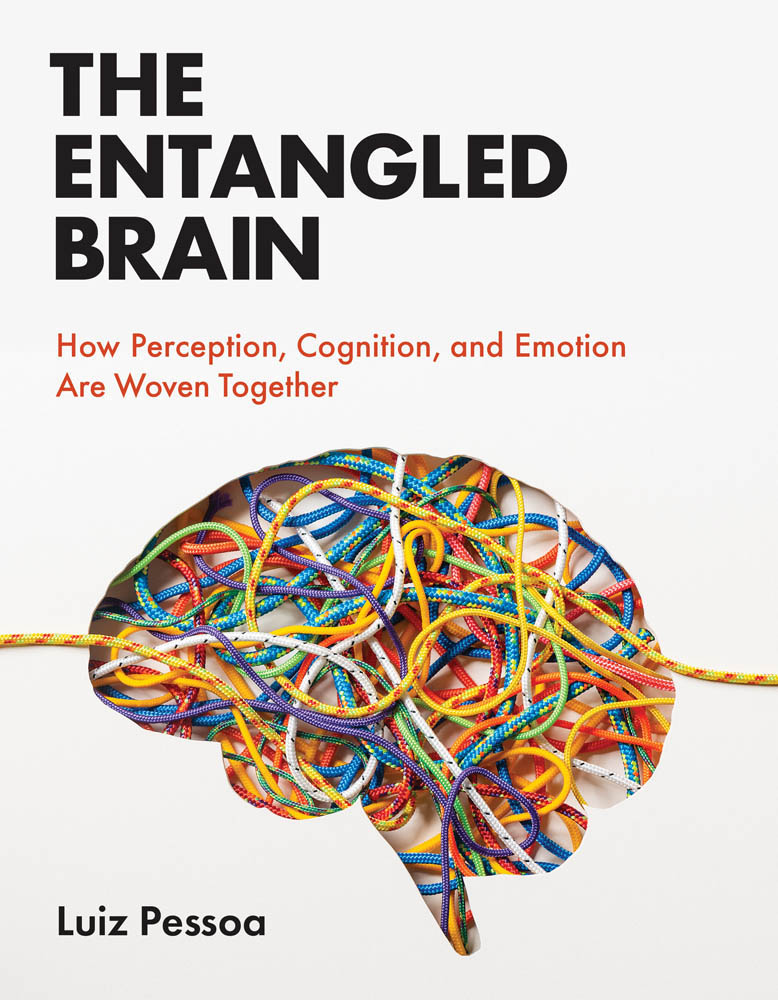
The Entangled Brain
How Perception, Cognition, and Emotion Are Woven Together
Luiz Pessoa
The MIT Press
Cambridge, Massachusetts
London, England
2022 Massachusetts Institute of Technology
This work is subject to a Creative Commons CC-BY-NC-ND license. Subject to such license, all rights are reserved.

The MIT Press would like to thank the anonymous peer reviewers who provided comments on drafts of this book. The generous work of academic experts is essential for establishing the authority and quality of our publications. We acknowledge with gratitude the contributions of these otherwise uncredited readers.
Library of Congress Cataloging-in-Publication Data
Names: Pessoa, Luiz, author.
Title: The entangled brain : how perception, cognition, and emotion are woven together / Luiz Pessoa.
Description: Cambridge, Massachusetts : The MIT Press, [2022] | Includes bibliographical references and index.
Identifiers: LCCN 2021061878 (print) | LCCN 2021061879 (ebook) | ISBN 9780262544603 (paperback) | ISBN 9780262372107 (pdf) | ISBN 9780262372114 (epub)
Subjects: LCSH: Perception. | Emotions and cognition. | Brain. | Neuropsychology.
Classification: LCC BF311 .P3767 2022 (print) | LCC BF311 (ebook) | DDC 153dc23/eng/20220411
LC record available at https://lccn.loc.gov/2021061878
LC ebook record available at https://lccn.loc.gov/2021061879
d_r0
To Amelie and Meg
List of Illustrations
Map of brain areas of the cortex published in 2016. Each hemisphere (or half of the brain) contains 180 areas indicated by different shades of gray and outlines. (a) The brain is shown in a side view. (b) The brain is shown through a cut revealing the middle.
Because little is known about how brain mechanisms bring about behaviors, neuroscientists use filler verbs, most of which add relatively little substantive content to the statements made.
Rube Goldberg apparatus as an example of mechanical explanation.
Multiple explanatory factors that influence morphological and behavioral variation among South American guppies, illustrating the rich network of relationships. Two of the relationships are bidirectional (see parallel arrows).
Human brain. (a) Side view shows the four major lobes of the brain. The darker traces are invaginations called sulci. (b) The cortex is the outermost part called gray matter, roughly three millimeters in depth. The white parts, called white matter, contain nerve fibers that anatomically link parts of the brain.
Subcortical brain regions. (a) Cut through the middle of the brain illustrates the position of some subcortical regions (PAG is the periaqueductal gray). (b) Rendering of some important structures. The striatum, which is discussed at length throughout the book, has two parts: the caudate and the putamen.
Embryonic brain sectors marked to indicate the portions that give rise to segments of the adult brain. For example, the rightmost sector gives rise to all forebrain regions, including the entire cortex, and all subcortical structures above the midbrain.
Schematic diagram of a neuron. Radiating away from the cell body (also called soma), we see an axon, the component that typically conveys signals to other neurons (this axon is enveloped by a myelin sheath that speeds up impulse transmission). The other extensions are dendrites, which are parts that typically receive inputs from other neurons. The synapse refers to the end of the axon, the narrow space between neurons, and the dendritic contact on the postsynaptic cell. The synapse is where chemical communication between cells takes place.
White matter. (a) The extensive white matter fibers of the brain interlink brain regions. (b) The fibers are organized in terms of fasciculi (a fasciculus is a bundle of axons), such as the superior longitudinal fasciculus (SLF) III.
The superior colliculus (called the optic tectum in vertebrates other than mammals) receives visual signals from the retina and projects to structures that control movements. The region is often described as a fairly direct sensorimotor interface.
Sensorimotor neuron. The middle, elliptical part is the cell body (the soma). The receptor part is above and is sensitive to external stimuli. Effectors can be activated by the axonal ends of the neuron and are capable of generating some kind of tissue motion.
Input-output decoupling. (a) The brain solves the problem of decoupling sensory inputs from immediate actions. (b) A fairly direct sensory-motor transformation supports limited and rigid behaviors. (c) Uncoupling input from output provides increased flexibility. The ellipses indicate progressively larger circuits.
Many vertebrates react to stimuli in the upper visual field by fleeing. Stimuli in other parts of the visual field yield other behaviors, including exploration.
Inputs and outputs of the superior colliculus (layers shown schematically). In particular, context signalsfor example, from the hypothalamusallow the region to generate responses that depend on the animals internal state.
Extended superior colliculus circuit (SC). (a) Simple sensorimotor interface, where inputs lead to direct outputs. (b) Context signals can influence the circuit. (c) Connections to the substantia nigra (SN) and periaqueductal gray (PAG). (d) The substantia nigra is also robustly connected with the striatum.
The double dissociation logic. If mental process A is affected by a lesion to region 1 but not region 2, and vice versa for mental process B, we say that they are doubly dissociated. To many neuroscientists (but not all!) this pattern suggests that areas A and B are functionally specialized.
Structure-function mapping in the brain. (a) One area, A, might be involved in a single function, F, such as when people suggest that the amygdala is specialized for processing fear. (b) But we know that the amygdala carries out multiple functions. (c) From the standpoint of functions (such as aversive processing), multiple areas may be able to carry it out. (d) Elements of biological systems, like areas of the brain, exhibit the most complex mapping of them all: many-to-many.
Multifunctional description of brain regions. (a) Visual areas MT and V4 can be described in terms of three attributes: direction, wavelength, and orientation. (b) Vector representation of the two areas.
Multifunctionality of brain regions. (a) A radial plot shows the functional profile of a sample region. It includes 20 attributes across four classes (perception, action, cognition, emotion). The plot indicates the degree of engagement of the region for each attribute. For example, emotion studies involving disgust-related pictures or words engage the region strongly, but other emotion-related content does not. (b) The color insert shows the distribution of a measure of functional diversity across the cortex (warmer colors indicate higher diversity; cooler colors, less diversity).
Outgoing connections of the hypothalamus. Descending projections to the periaqueductal gray (PAG) and along the brainstem are indicated by the arrow. Other structures discussed in the book include the thalamus and amygdala, shown for reference.
Return pathways to the hypothalamus (light gray), as well as pathways from this area to nearly all of the cortex.
Font size:
Interval:
Bookmark:
Similar books «The Entangled Brain: How Perception, Cognition, and Emotion Are Woven Together»
Look at similar books to The Entangled Brain: How Perception, Cognition, and Emotion Are Woven Together. We have selected literature similar in name and meaning in the hope of providing readers with more options to find new, interesting, not yet read works.
Discussion, reviews of the book The Entangled Brain: How Perception, Cognition, and Emotion Are Woven Together and just readers' own opinions. Leave your comments, write what you think about the work, its meaning or the main characters. Specify what exactly you liked and what you didn't like, and why you think so.

